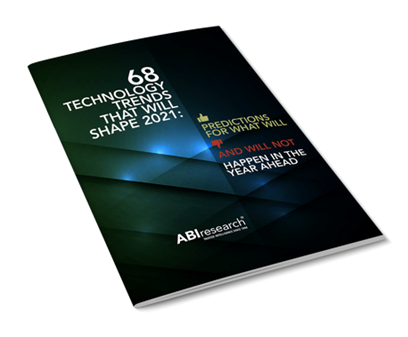2021—The Year of Ultra-Wideband for Indoor Positioning
ABI Research published a new whitepaper, 68 Technology Trends That Will Shape 2021, identifying 37 trends that will impact the technology sector. One of the 37 is ABI’s forecast that Ultra-Wideband (UWB) will become a mainstream wireless connectivity technology across many consumer and IoT applications. It will be key in enabling accurate indoor location and positioning with context-aware information and precise analytics in real-time. ABI estimates that there will be 300 million UWB device shipments in 2021.
The paper cites wider chipset availability, adoption across multiple segments, and the existence of a healthy UWB ecosystem across the entire chain as the reason for UWB’s increased adoption. The technology moved into new markets during 2020. For example, Apple decided to develop and use its own UWB technology in iPhone 11, iPhone 12, iPhone SE devices, and the latest Apple Watch Series 6 and HomePod Mini speaker. Samsung also supports UWB in its Galaxy Note 20, and Xiaomi added UWB to its Mi 10 series and recently demonstrated UWB leveraged within smart home devices such as fans, lamps, and smart speakers.
The White Paper also mentions trends that won’t take off during 2021, including Low Earth Orbit Satellites will not overtake GEO operator’s dominance, but SpaceX and OneWeb, are ramping up development and production of their LEO solutions to offer affordable and universal connectivity solutions. The challenge is still to overcome the cost implications of deploying large-scale satellite fleets. Other considerations that LEO companies must confront include the need for more ground system infrastructure, proper orchestration of seamless switching/hand-offs of up to thousands of beams (due to the narrower spot beam capabilities of modern high throughput satellite systems), and navigating the varied landing rights of different countries.

